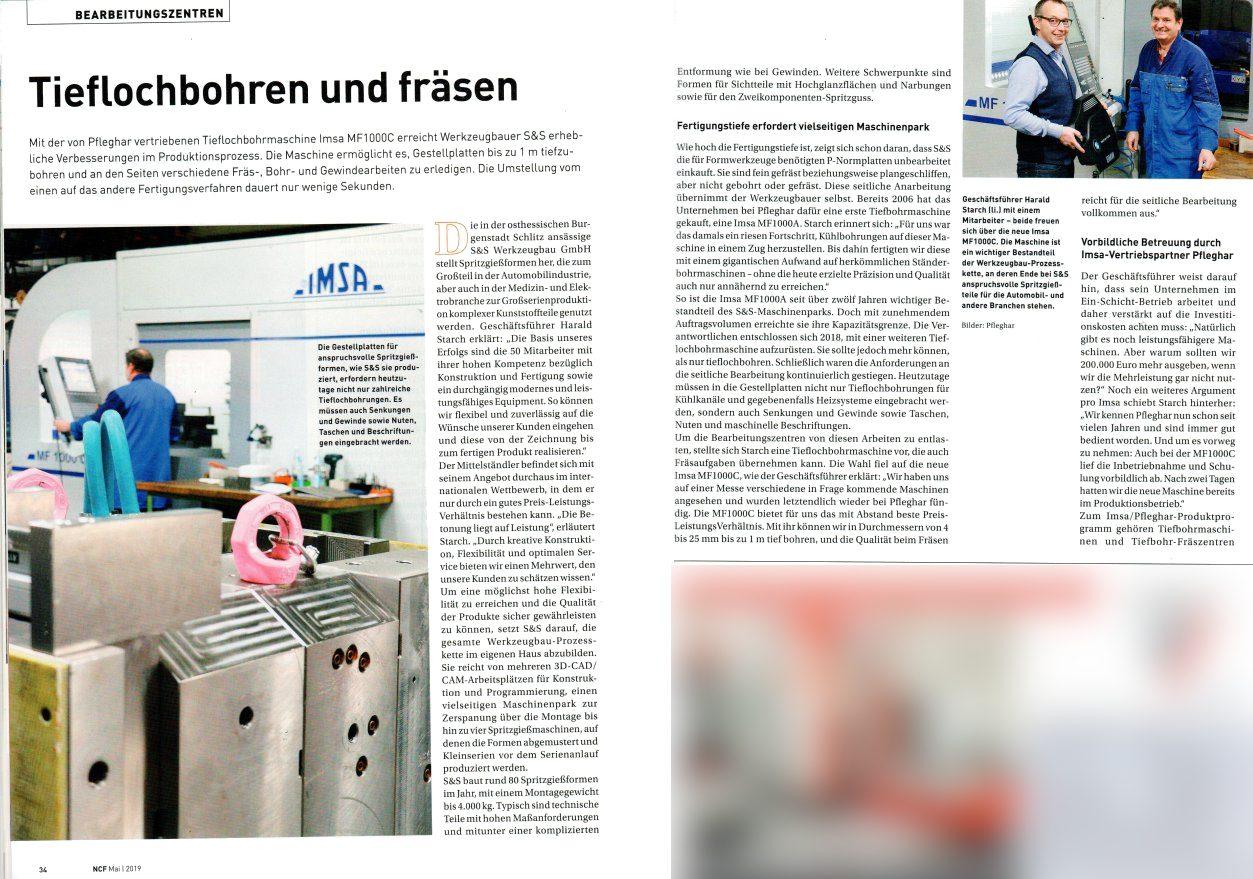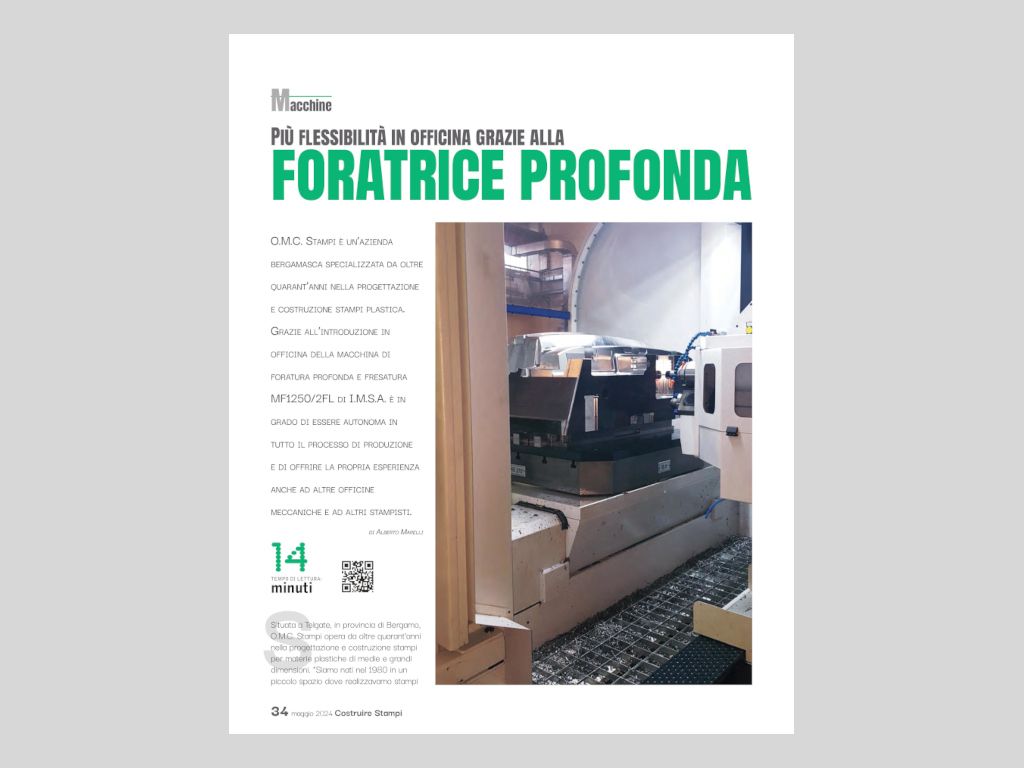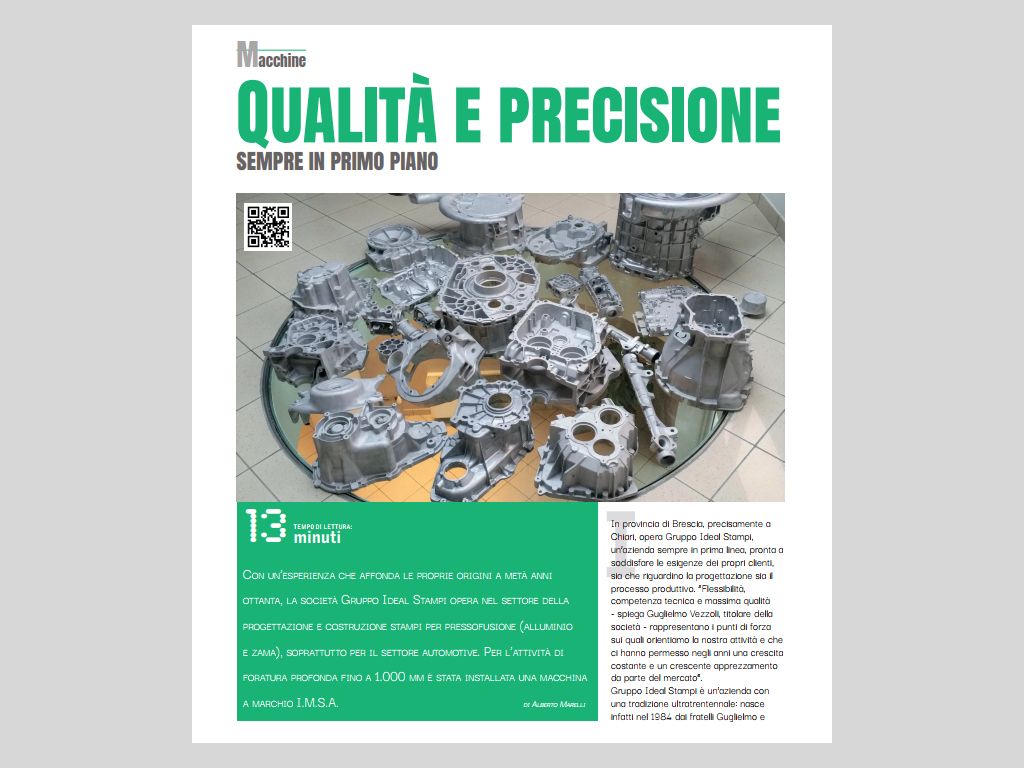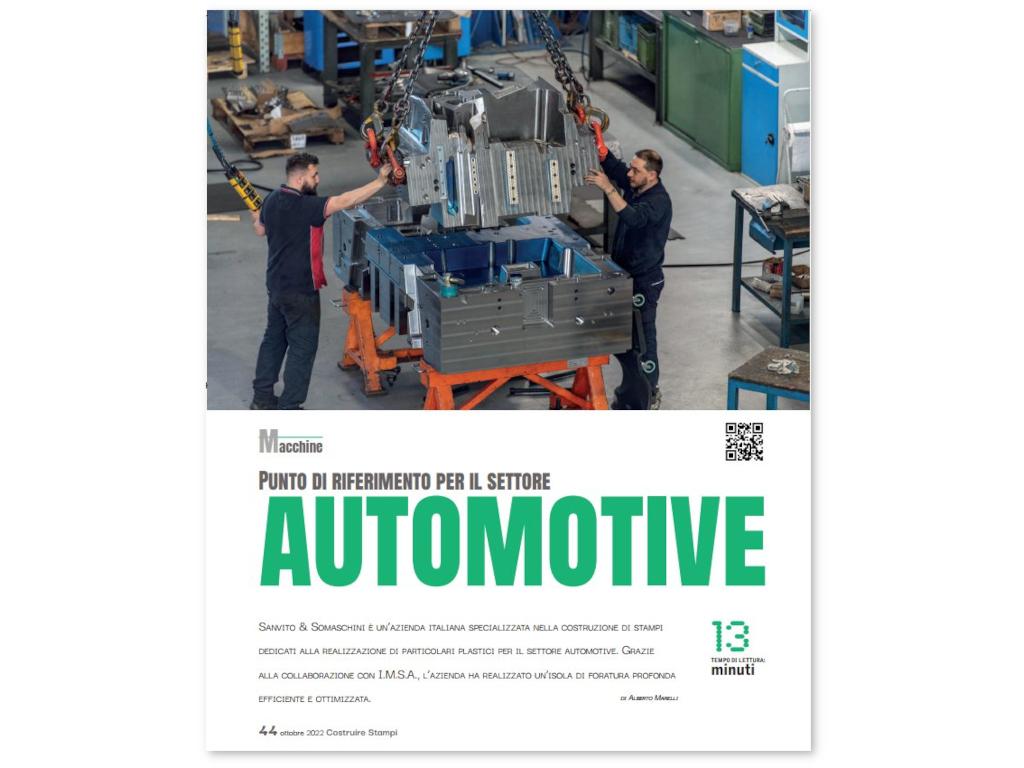With the IMSA MF1000C deep drilling machine sold by Pfleghar, mold manufacturer S&S has achieved significant improvements in the production process. The machine allows mold bolsters of up to one meter in depth to be drilled as well as different milling, drilling and threading operations to be performed. The switch from one production process to another takes only a few seconds.
Translation of article that appeared in the German industrial magazine NC FERTIGUNG, May 2019
S&S Werkzeugbau GmbH, based in Burgenstadt Schlitz, a city in eastern Hesse, Germany, makes injection molds that are used mainly in the automotive industry, but also in the medical and electrical industries, for the mass production of complex plastic parts. CEO Harald Starch explains: “Our 50 employees, who are highly skilled in design and production, are the key to our success, as well as the increasingly modern and efficient equipment we rely on. This enables us to meet our customers’ requests in a flexible and reliable way, from the early design stage to the finished product.”
The medium-sized company is active in the global market, thanks to its range of products, and remains competitive by providing good value for money. “Our secret is our production capacity,” explains Starch. “Through creative construction, flexibility and great service, we offer added value that our customers appreciate.”
To achieve the greatest possible flexibility and ensure the quality of products, S&S relies on internal processes for the production chain of the entire mold construction process. Starting from various 3D CAD/CAM workstations for the design and planning, versatile machinery for the processing and assembly and finally, four injection-molding machines, on which the molds are sampled and small sets are produced before the start of mass production.
S&S builds about 80 injection molds per year, with a weight of up to 4000 kg. These are typically technical parts with high requirements in terms of size and sometimes with complex mold release, as in the case of threading. Other key products are the molds for visible parts with knurling and glossy surfaces as well as for two-component injection molding.
A STRONG DEGREE OF VERTICAL INTEGRATION REQUIRES VERSATILE MACHINERY
The P-type standard plates for mold forming are purchased by S&S untreated and this is a demonstration of the high degree of vertical integration at the company. The plates are highly precision milled and/or have a smooth surface but are not drilled or milled. S&S itself takes care of the secondary processing.
By 2006 the company had bought its first machine for deep drilling – the IMSA MF1000A – from Pfleghar. Harald Starch still remembers: “At the time, drilling coolant holes in one step with this machine was a huge step forward for us. Up to that point, we produced them with a huge effort on traditional drill presses, without even coming close to the precision and quality achieved today.”
The IMSA MF1000A machine has been an important part of S&S’s machinery for over twelve years. But with the increase in the volume of orders it has reached its capacity limit. So, in 2018 the managers decided to buy another deep drilling machine. Nevertheless, it needed to be able to do more than just deep drilling. After all, secondary machining requirements have become increasingly greater. Today, not only deep drilling for cold channels and possibly heating systems are made on mold bolsters, but also flaring and threading, as well as pockets, grooves and machine engraving.
Harald Starch wanted a deep drilling machine that could also perform milling, so as to lighten the load of the machining centers. The choice fell on the new IMSA MF1000C, as Starch explains: “We looked at a number of possible machines at a trade show and in the end we found what we were looking for with Pfleghar again. The IMSA MF1000C offers us by far the best solution in terms of cost-effective performance. It allows us to drill holes up to a depth of one meter with a diameter comprised between 4 and 25 millimeters, and the milling quality is more than enough for the secondary processing. “
FIRST-CLASS SUPPORT FROM PFLEGHAR, ONE OF IMSA’S TRADING PARTNERS
The CEO stressed that his company operates on a single shift and must therefore pay greater attention to investment costs: “Of course there are even more powerful machines. But why spend 200,000 euros more for a higher power that we would not make use of? “
Another argument in favor of IMSA; according to Starch: “We have known Pfleghar for many years and have always been very satisfied. And it has to be said: also for the IMSA MF1000C, the set-up and training were second to none. After two days the new machine was already in production.”
The range of IMSA/Pfleghar products includes deep drilling machines and deep drilling/milling centers of different sizes. They are compatible with components weighing between 2 and 45 tons, and a fully automated version with deep drilling bar change is available.
As regards the technical specifications of IMSA MF1000C, designed for deep drilling and milling of small and medium-sized components, the machine has a vertical portal structure which guarantees a considerably higher rigidity than the traditional structure. Foundation is not required. The entire machine is enclosed in a modern oil-tight crankcase, ensuring optimum cleaning of the surrounding area. S&S has chosen a rotary table with a mounting surface area of 700 x 800 mm and a load capacity of max. 2000 kg. Alternatively, IMSA also offers a larger rotary table with a maximum load of 4000 kg. The loading is carried out via the front door, from the front or from above. The usable travel ranges are 1000 mm along the X axis, 520 mm along the Y axis and 400 mm along the Z axis. The maximum drilling depth (V axis) is 1000 mm.
FASTER SWITCHING BETWEEN DRILLING AND MILLING AND VICE VERSA
The IMSA MF1000C is equipped with an ISO40 spindle (13 kW, 6000 rpm) used both for drilling and for the milling. Gun drills are used for deep drilling and are guided along the entire length by SK40 steady rests. S&S has demonstrated some creativity in the conservation of these long bars: some ingenious collaborators have built a rack on which it is possible to store up to 40 hanging tools. It is easy to use and saves space compared to horizontal storage. In addition, if oil from the tool machining drips, it is quickly picked up from a special tank.
One strong point is the “Swing on Top System” developed by IMSA, which enables a smooth transition from deep drilling to milling and vice versa in a short time. The entire drilling unit, including the chip boxes and the steady rests, swings upwards leaving the spindle free in order to perform the milling. Harald Starch and his skilled workers are satisfied with this technical solution: “So far, we haven’t found any other system that could change as quickly as the IMSA solution.” The manual disassembly of components of the machine by the operator is not necessary.
In the milling configuration, the spindle is positioned on the front part of the machining unit, toward the workpiece. From the five places in the tool store, the appropriate tool is loaded onto the spindle (cutter, spiral drill bit or thread cutter, depending on requirements) and processing can start immediately.
Another important improvement of the new IMSA MF1000C compared to the older MF1000A, as Starch points out, it is the Heidenhain TNC 600 series numerical control unit, with which S&S’s skilled workers are familiar with, owing to their experience with other machines. In addition to the standard functions, the unit includes special cycles of deep drilling resulting from the collaboration between the IMSA and Heidenhain teams.




